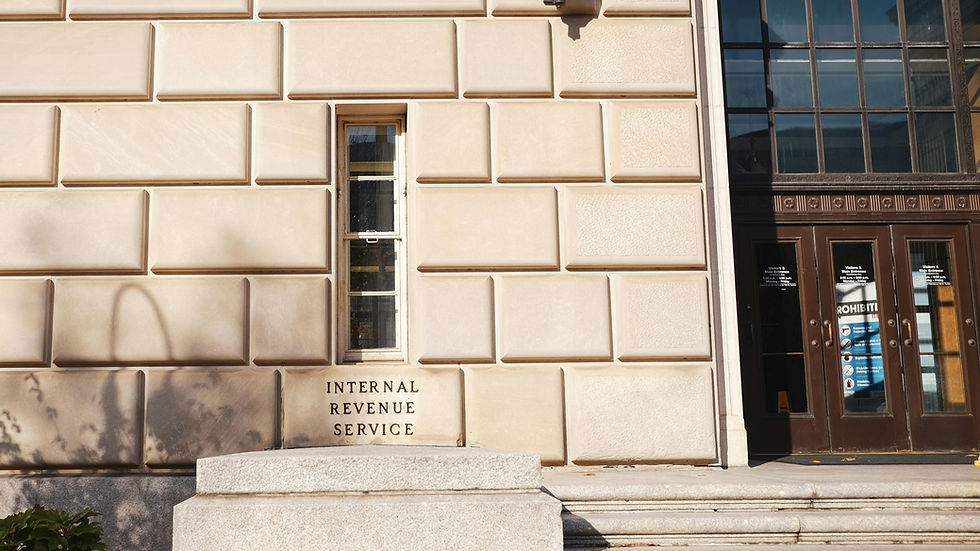Asset Depreciation 101: Accelerated vs. Straight-Line Explained
- Greg Pacioli

- Dec 17, 2024
- 3 min read
Updated: Oct 1

Introduction to Depreciation
You've just bought a brand new delivery van for your business, and the moment you drive it off the lot, its value begins to drop. Depreciation is the accounting technique that helps businesses track and document this slow decline in value over time.
However, there are different methods of depreciation, and they aren't all created equal. Continue reading to find out which method comes out on top in the battle between Accelerated Depreciation and Straight-Line Depreciation.
What is Straight-Line Depreciation?
Straight line depreciation is the simplest and most straightforward approach to calculating an asset's declining value. It is commonly used due to its simplicity and consistency.
How Straight-Line Depreciation Works:
Determine the asset's initial cost
Subtract the salvage value (what it's worth at the end of its life)
Divide by the useful life of the asset (in years)
Annual Depreciation Expense = (Cost of Asset - Salvage Value) / Useful Life
Example:
Let's say you buy a van for $50,000 with an expected useful life of 5 years and a salvage value of $10,000.
Depreciable amount: $50,000 - $10,000 = $40,000
Annual depreciation: $40,000 ÷ 5 years = $8,000 per year
Advantages:
Simplicity: Easy to calculate and apply.
Predictability: Provides consistent expense recognition, aiding in budgeting and forecasting.
Disadvantages:
Lack of Reflection of Actual Usage: May not accurately represent assets that lose value more rapidly in initial years.
Accelerated Depreciation: A Different Approach
Accelerated depreciation is like a rollercoaster of value reduction. In the early years, the asset loses value much more quickly, with depreciation amounts tapering off in later years.
How Accelerated Depreciation Works:
Double Declining Balance (DDB): Depreciates the asset at twice the rate of straight-line depreciation.
Sum-of-the-Years' Digits (SYD): Assigns depreciation based on the sum of the asset's useful life years, resulting in higher expenses initially.
Modified Accelerated Cost Recovery System (MACRS)
Example:
Using Double Declining Balance for the same $50,000 van:
First year: 40% depreciation ($20,000)
Second year: 40% of remaining value
Subsequent years: Declining amounts
Advantages:
Tax Benefits: Higher depreciation expenses in early years can reduce taxable income, deferring tax liabilities.
Matching Principle: Better matches expenses with revenue for assets that are more productive initially.
Disadvantages:
Complexity: More complicated calculations compared to straight-line.
Lower Net Income Early On: Higher expenses reduce net income in the initial years.
Why Choose One Over the Other?
Straight-Line Depreciation Advantages:
Straight-line depreciation offers remarkable simplicity that appeals to many businesses seeking a straightforward approach to asset valuation. Its primary advantage lies in its uncomplicated calculation method, providing a clear and predictable expense reporting mechanism.
For assets that demonstrate a consistent and even decline in value over time, such as certain types of office furniture or building components, straight-line depreciation provides an elegant and accurate reflection of the asset's economic reality.
Accelerated Depreciation Advantages:
Accelerated depreciation, by contrast, presents a more dynamic approach to asset valuation that can be particularly advantageous for businesses with rapidly evolving assets. This method allows companies to claim larger tax deductions in the initial years of an asset's life, which can provide significant financial benefits.
By front-loading tax deductions, accelerated depreciation provides more immediate tax benefits, allowing businesses to optimize their financial strategy and cash flow in the critical early years of an asset's lifecycle.
Tax Implications
The choice between straight-line and accelerated depreciation depends on factors such as:
Nature of the Asset: Consider how the asset's value and productivity decline over time.
Tax Strategy: Evaluate the impact on taxable income and cash flow.
Financial Reporting Goals: Align with financial statement objectives and stakeholder expectations.
Consulting with a financial advisor or accountant is advisable to determine the most suitable depreciation method for your specific circumstances.
Final Thoughts: Accelerated Depreciation vs. Straight-Line Depreciation
Depreciation is not just an accounting method; grasping its mechanics and implications allows businesses to make informed choices that fit their financial strategies and operational realities.
In real estate, these concepts hold particular importance. Cost segregation enables property owners to dissect the building into its individual components, applying accelerated depreciation to assets with shorter lifespans, such as electrical systems, plumbing, landscaping, and interior upgrades. By strategically identifying and depreciating these components separately, a property could potentially yield significantly greater tax deductions in its initial years.
Regardless of whether you opt for accelerated depreciation or straight-line depreciation, the crucial factor is to make a well-informed choice that aligns with your business strategy.
Pro Tip: The most effective method often hinges on your specific business situation. What may be suitable for a residential rental could differ from what works for a commercial real estate investment.



Comments